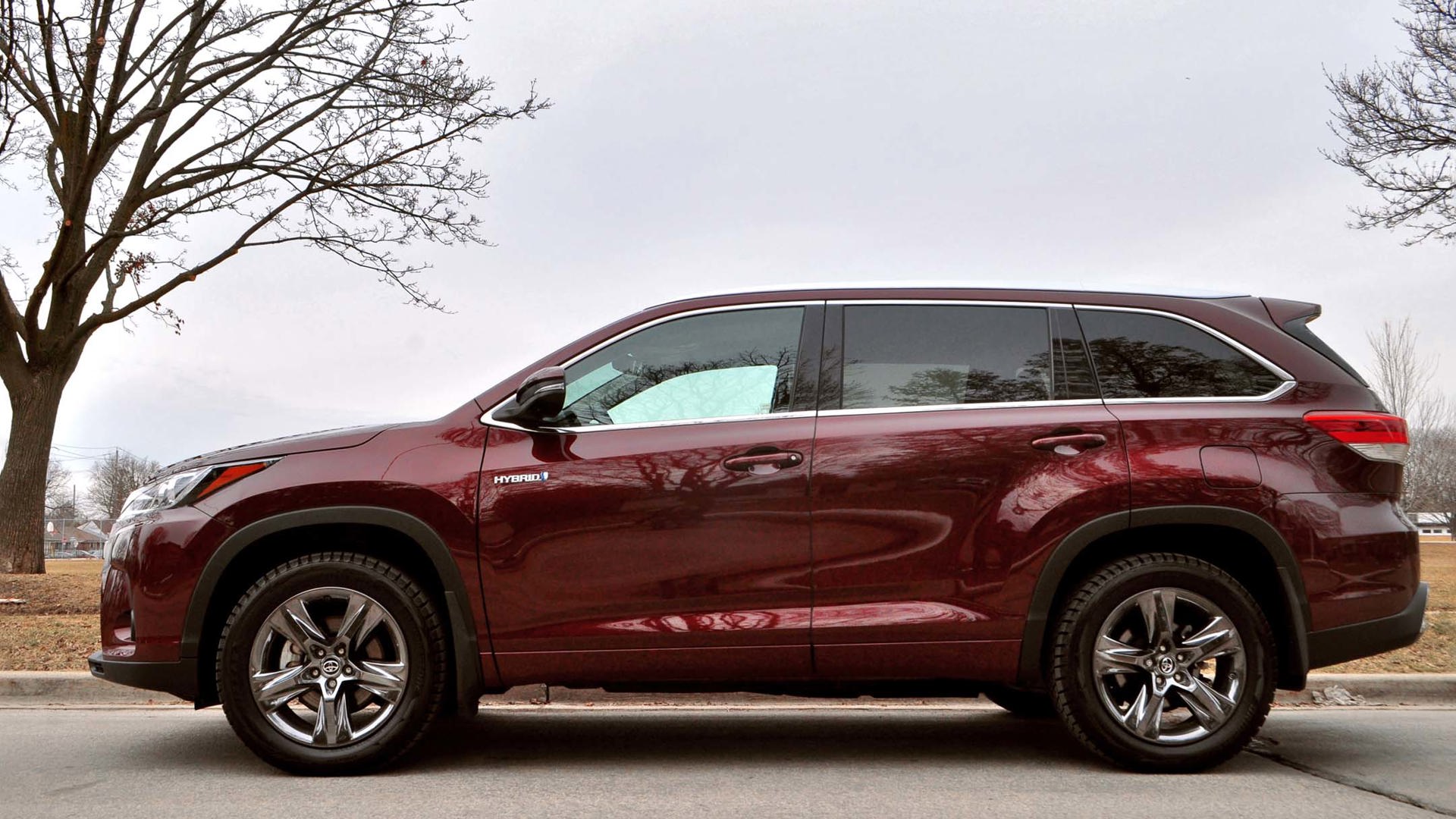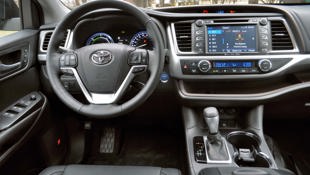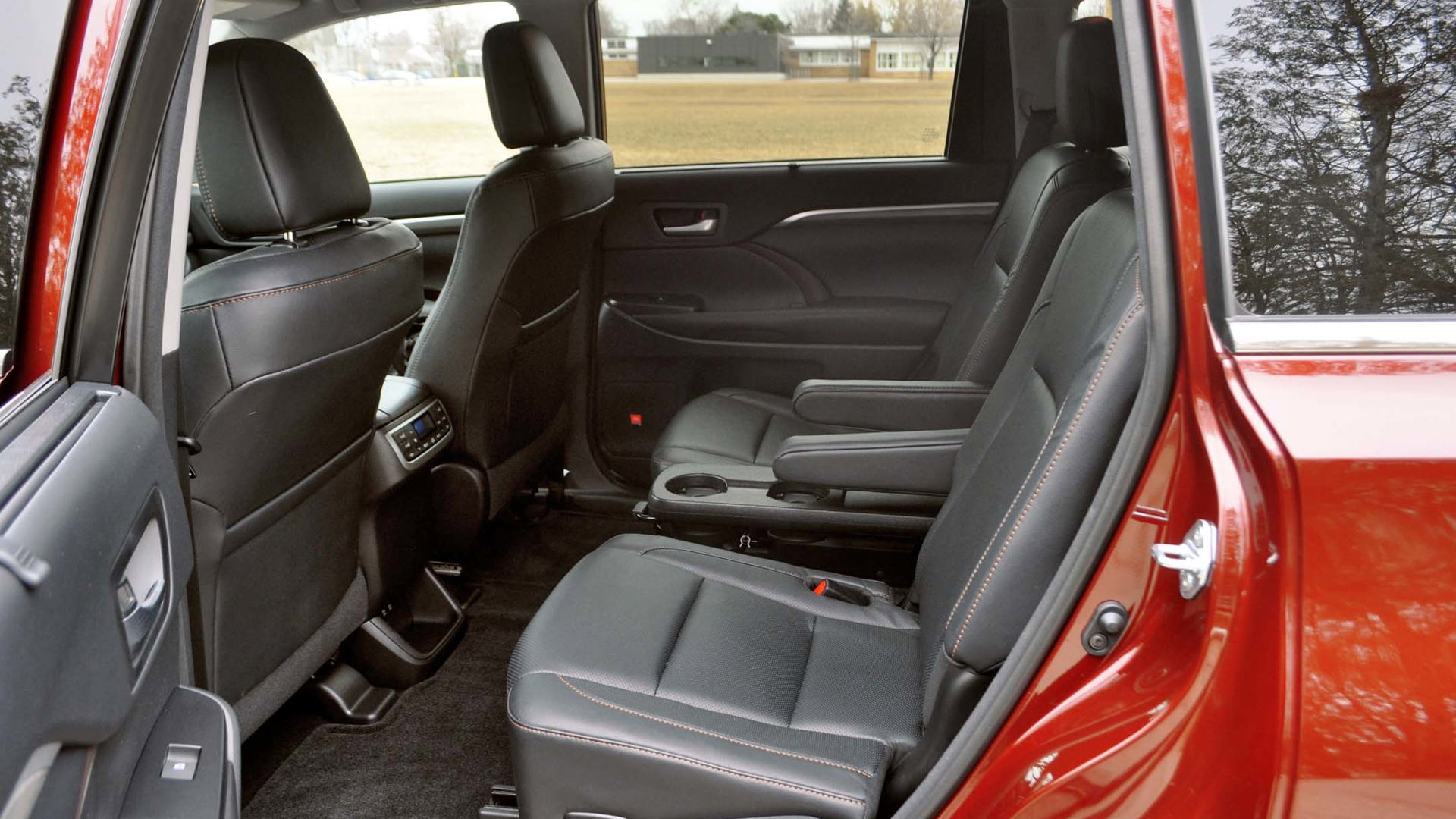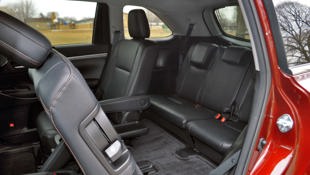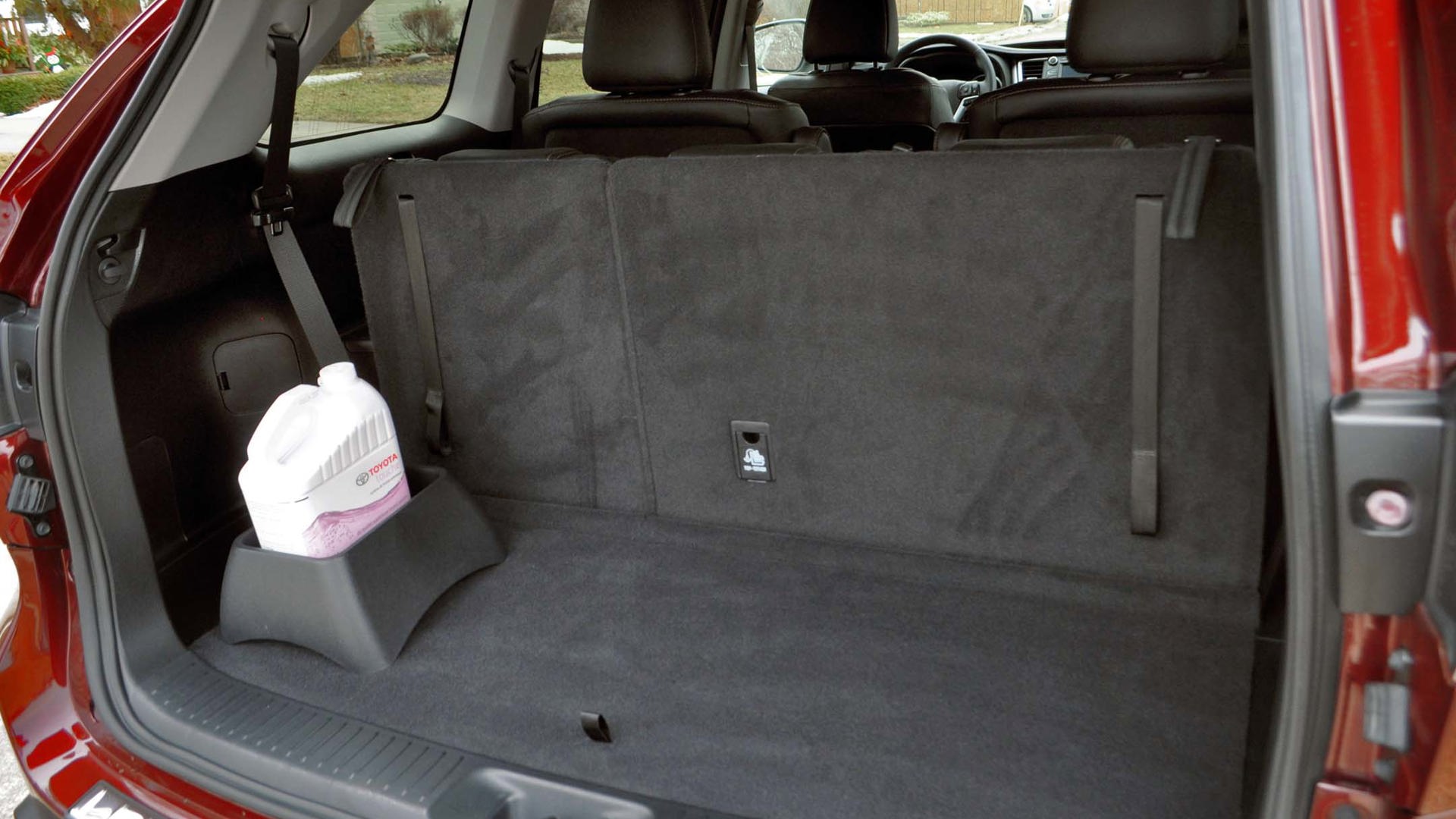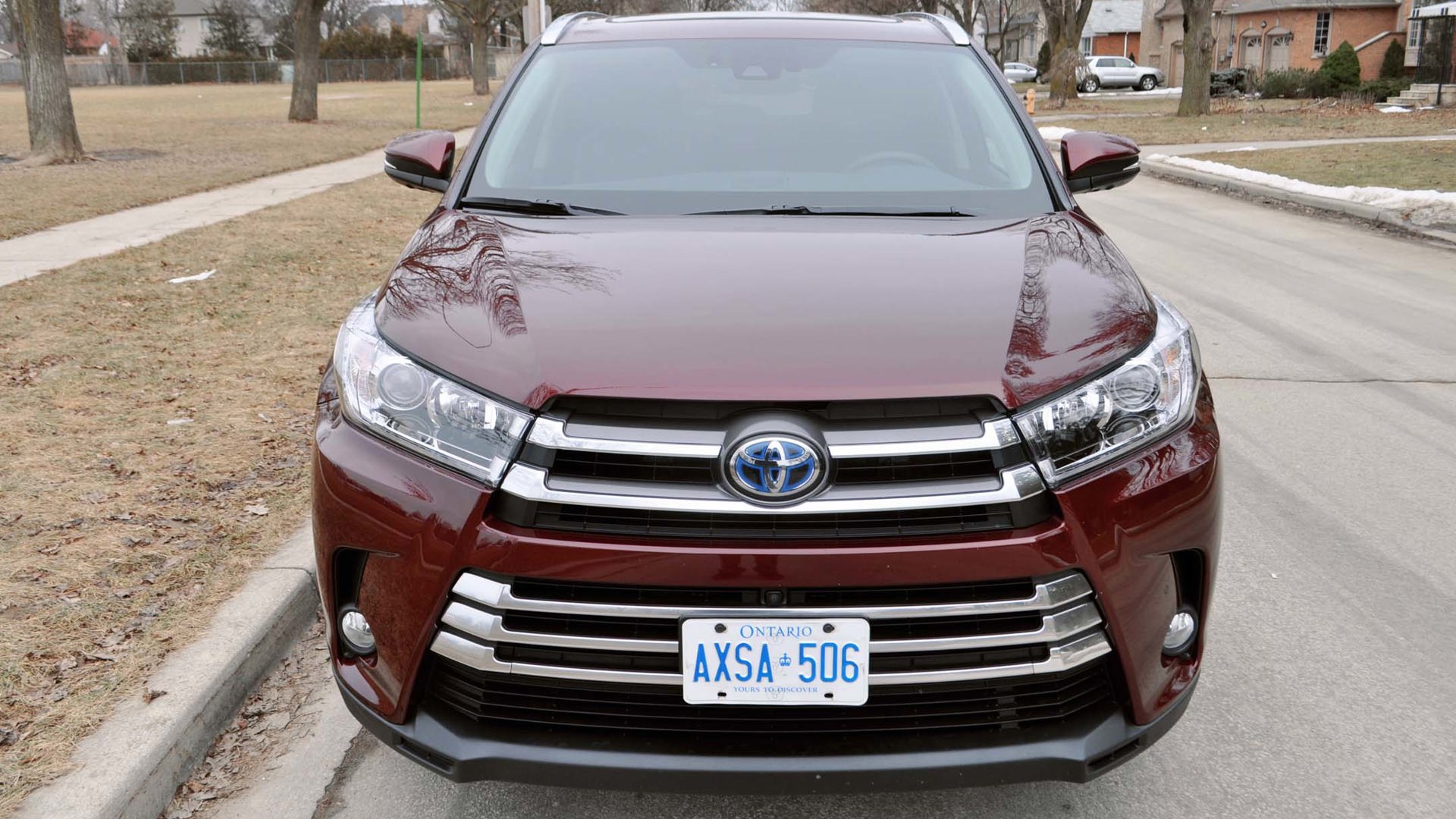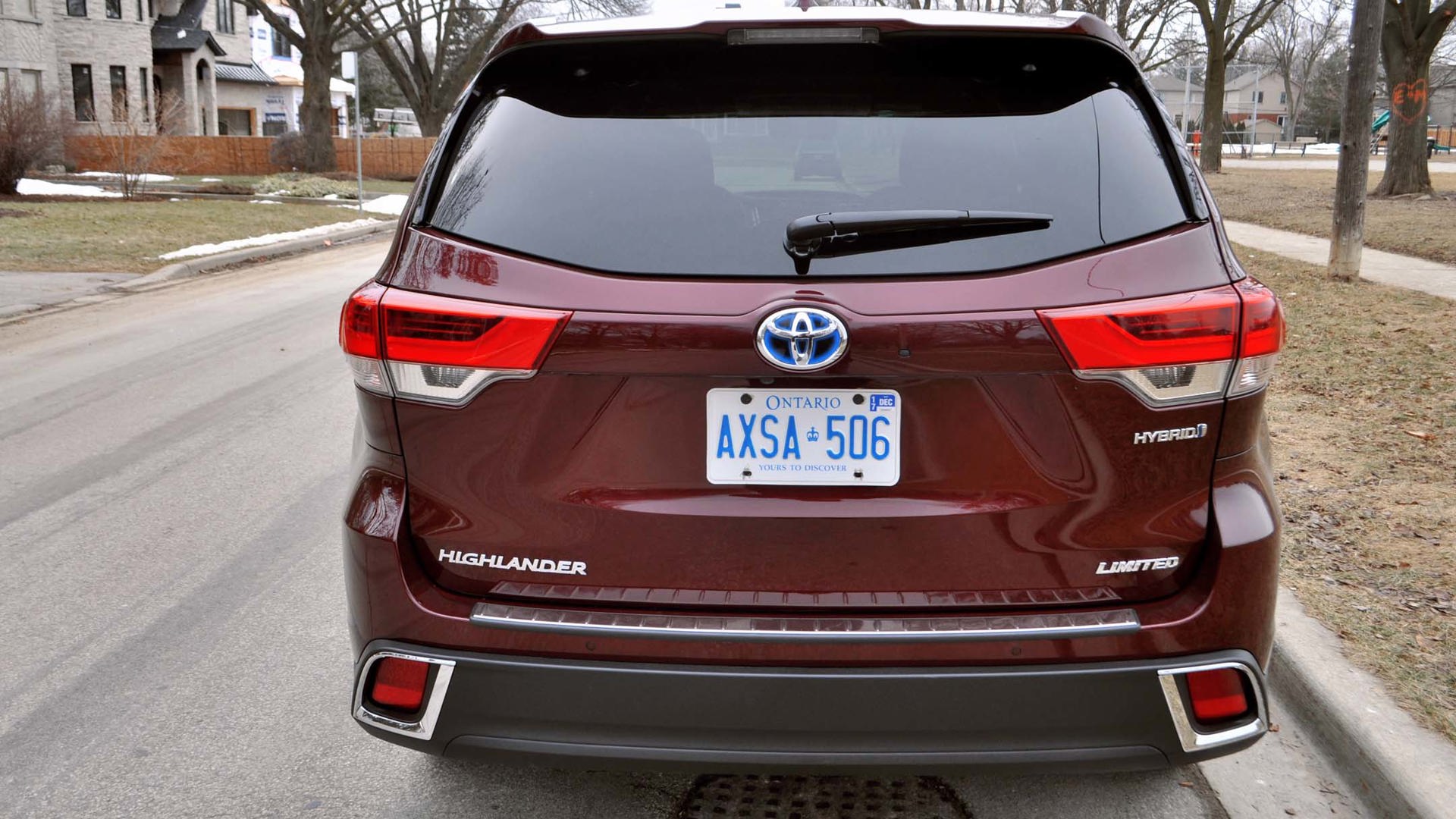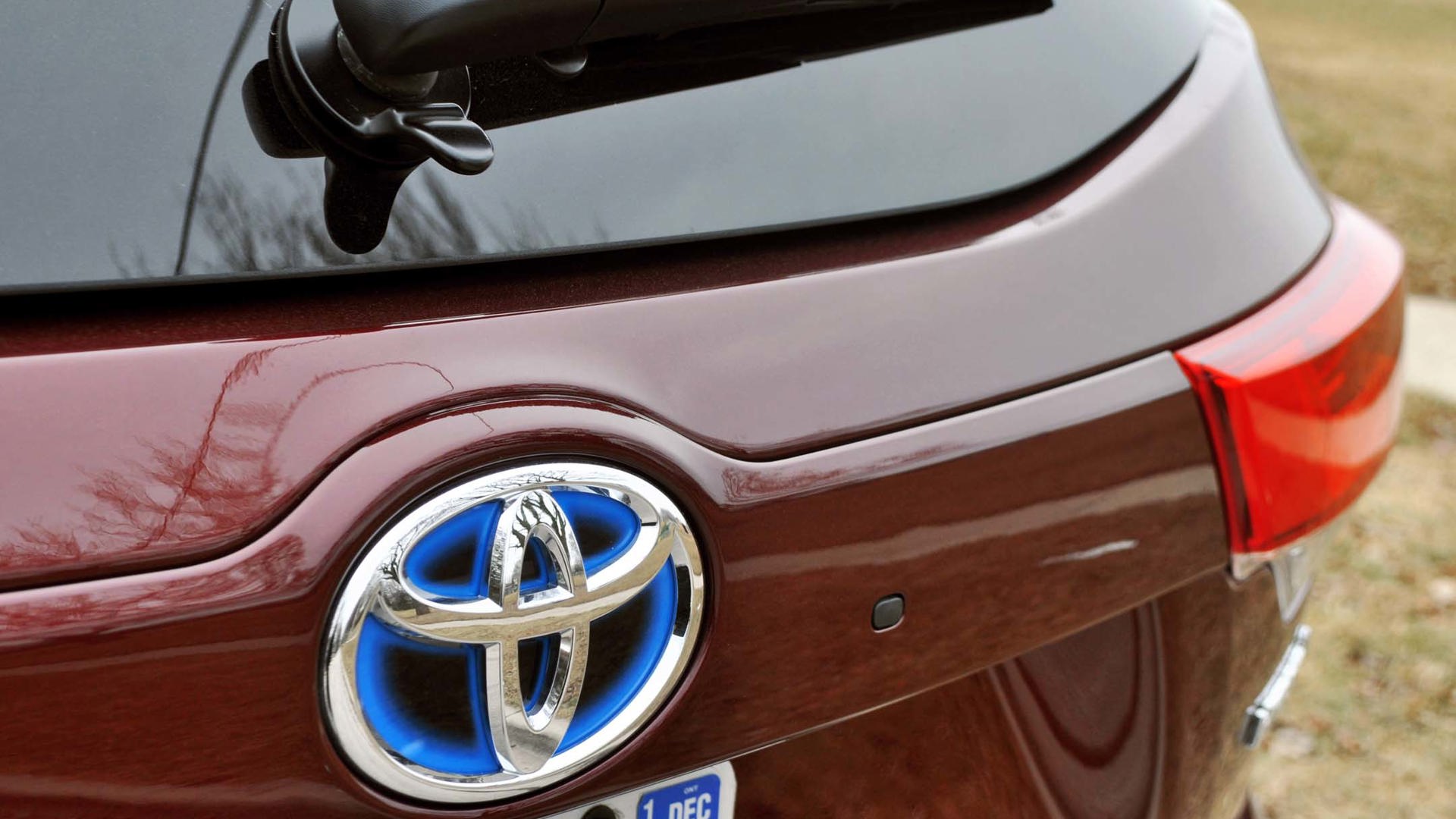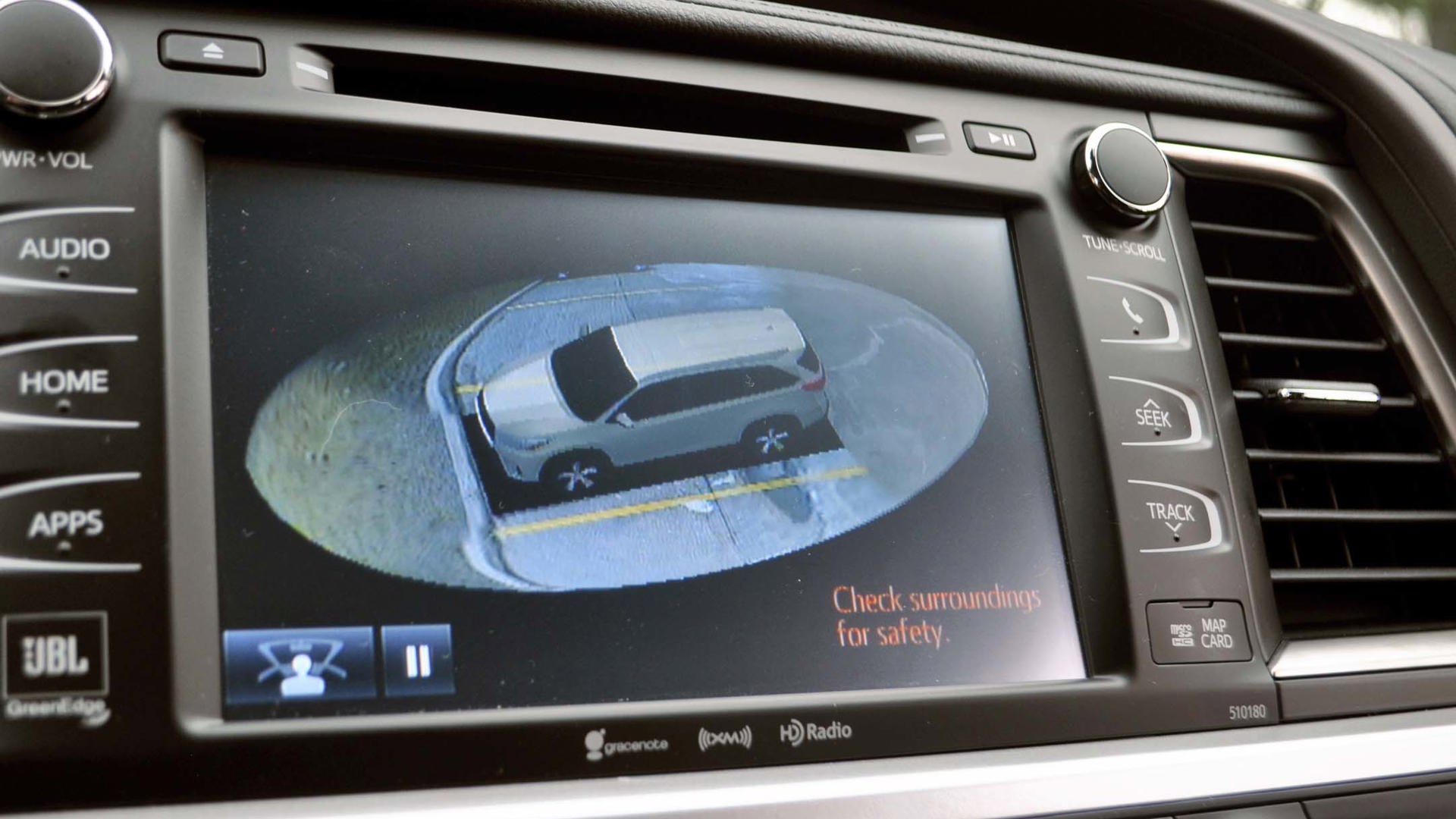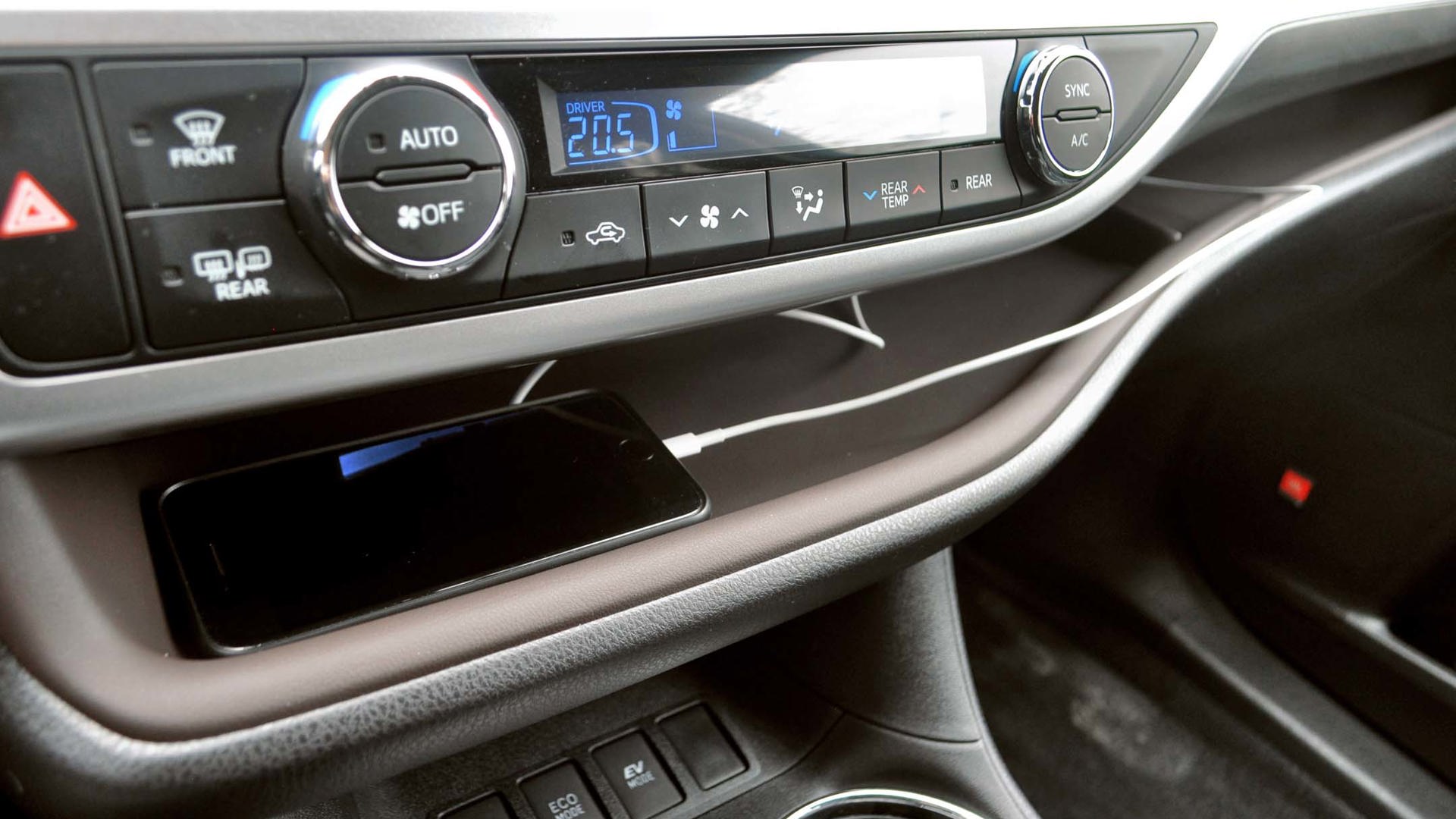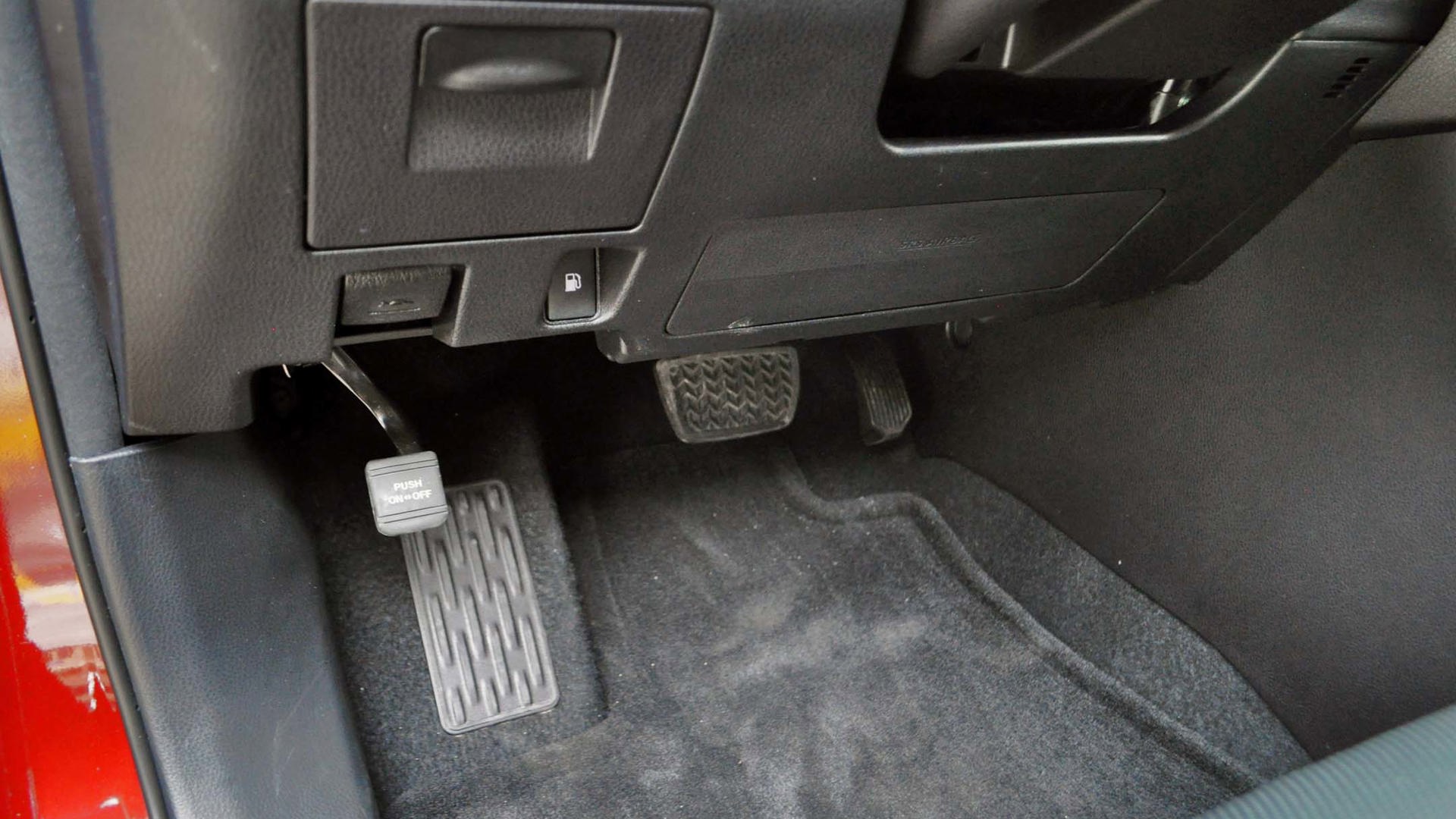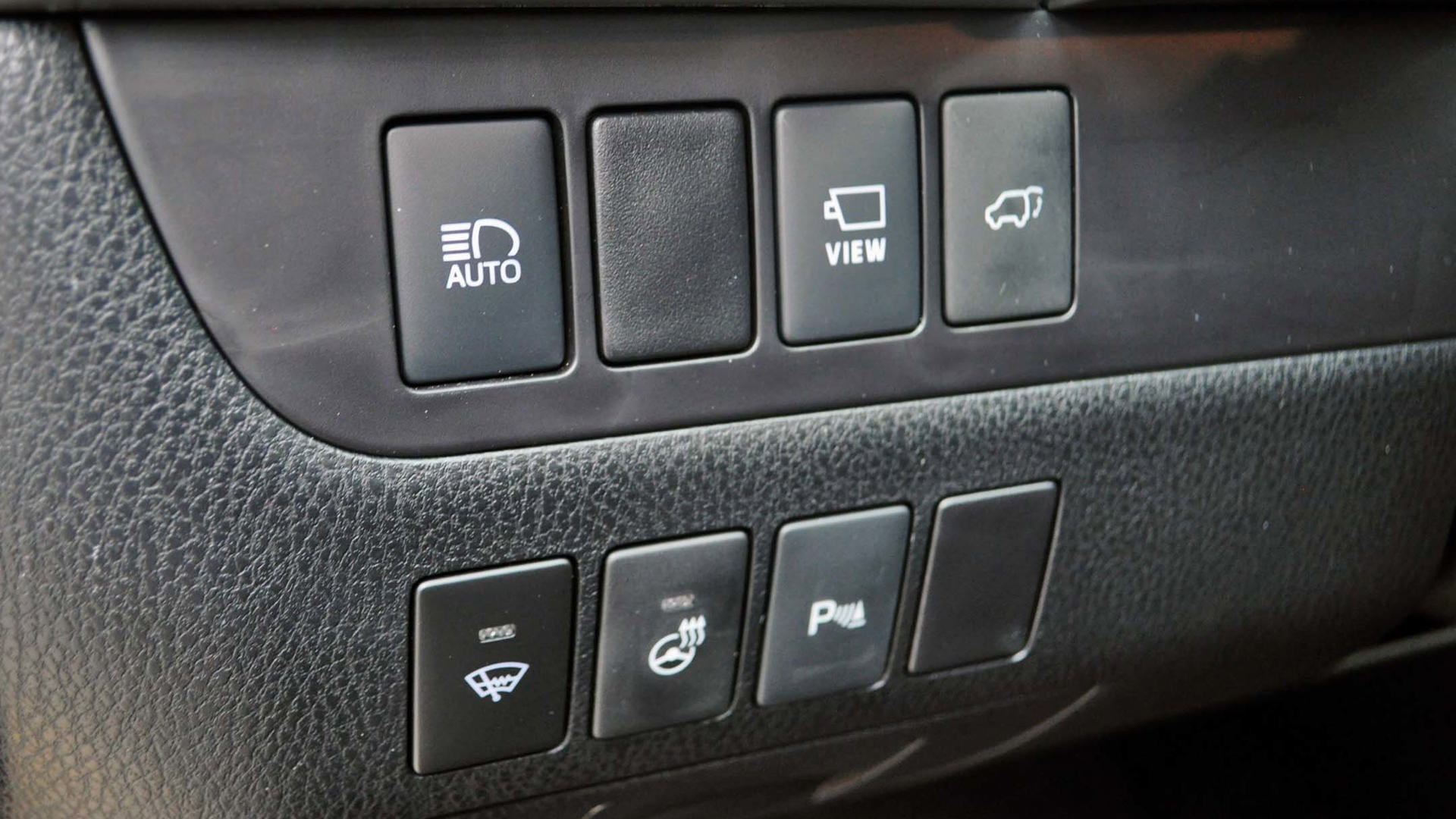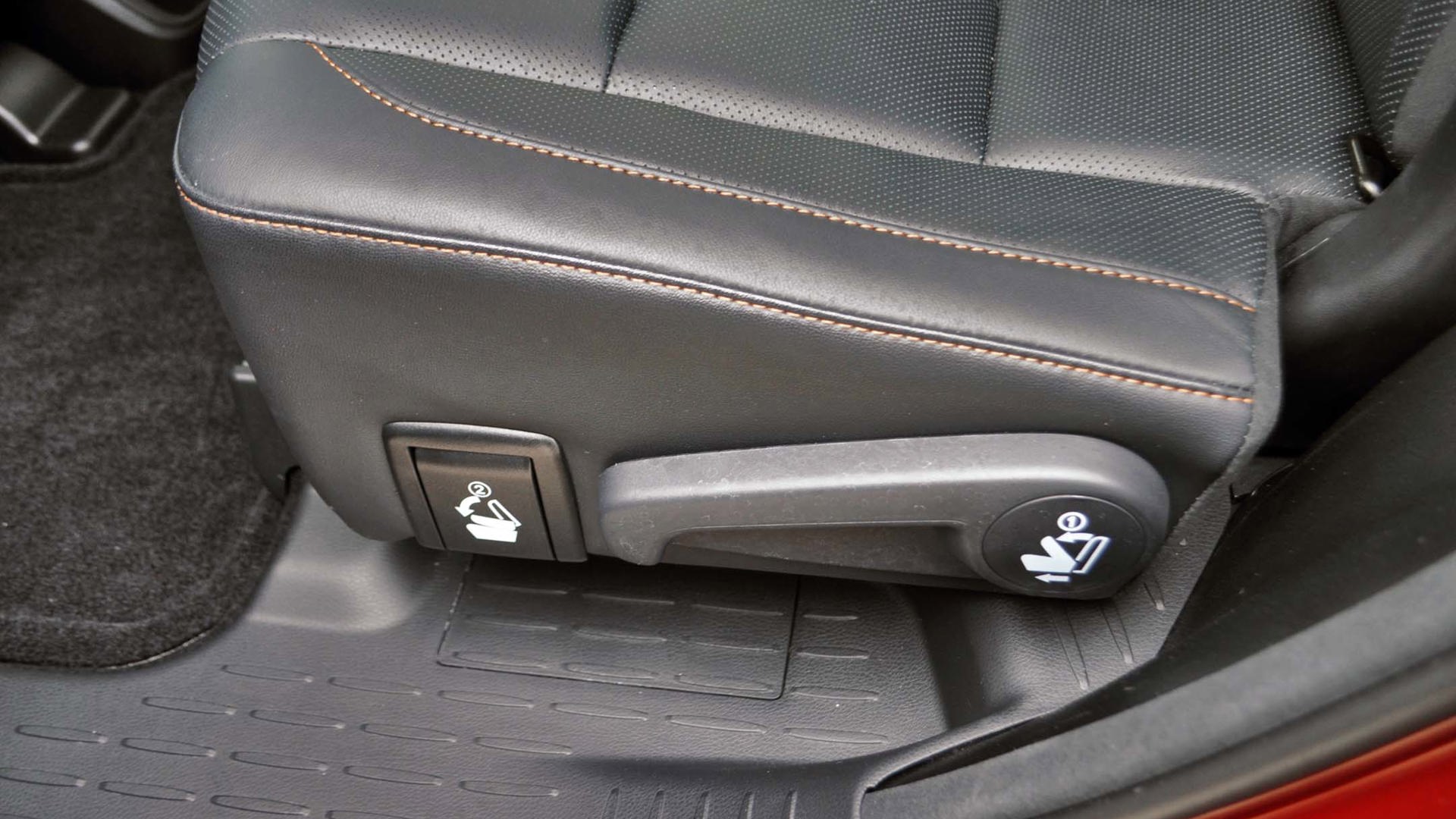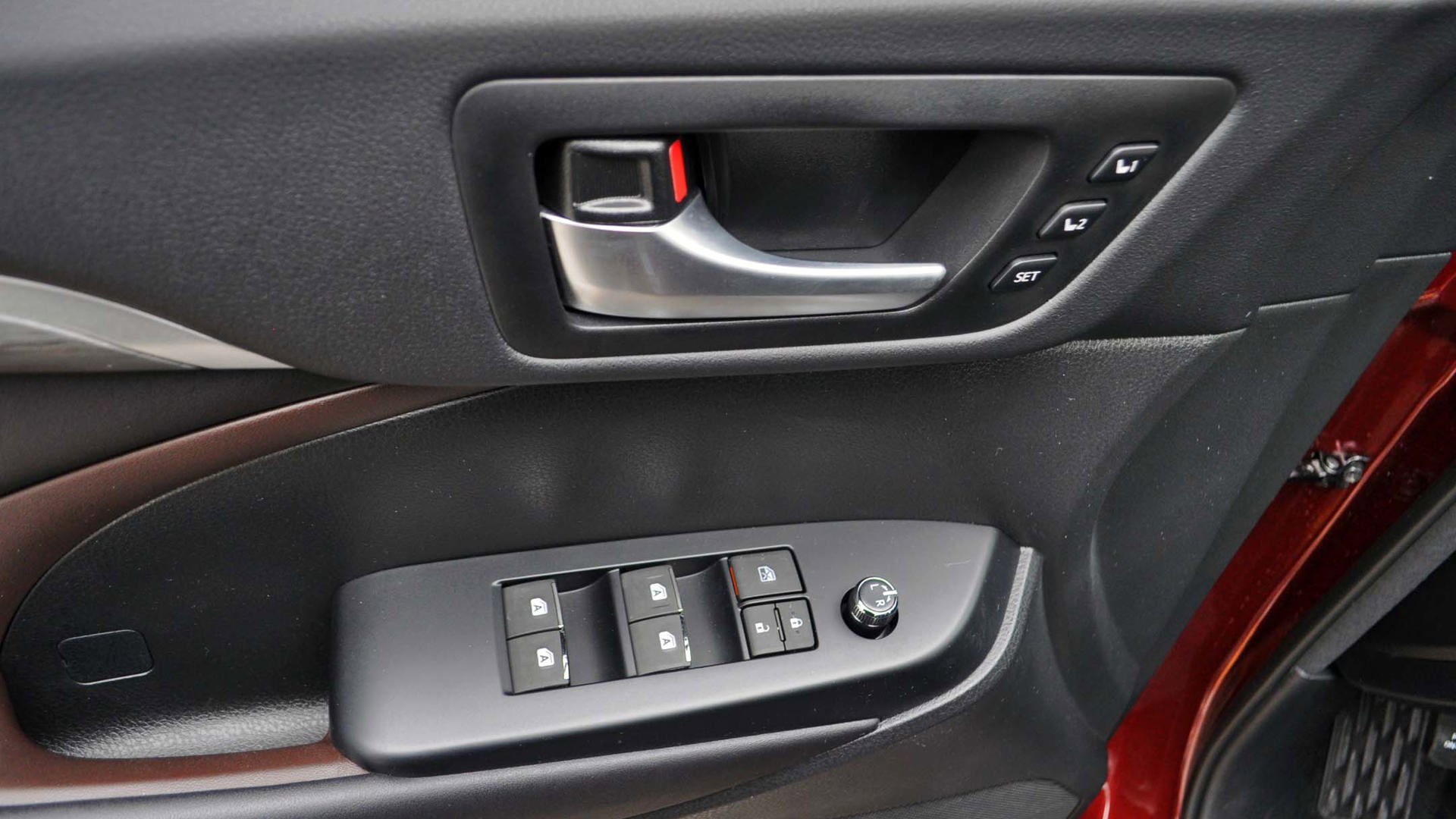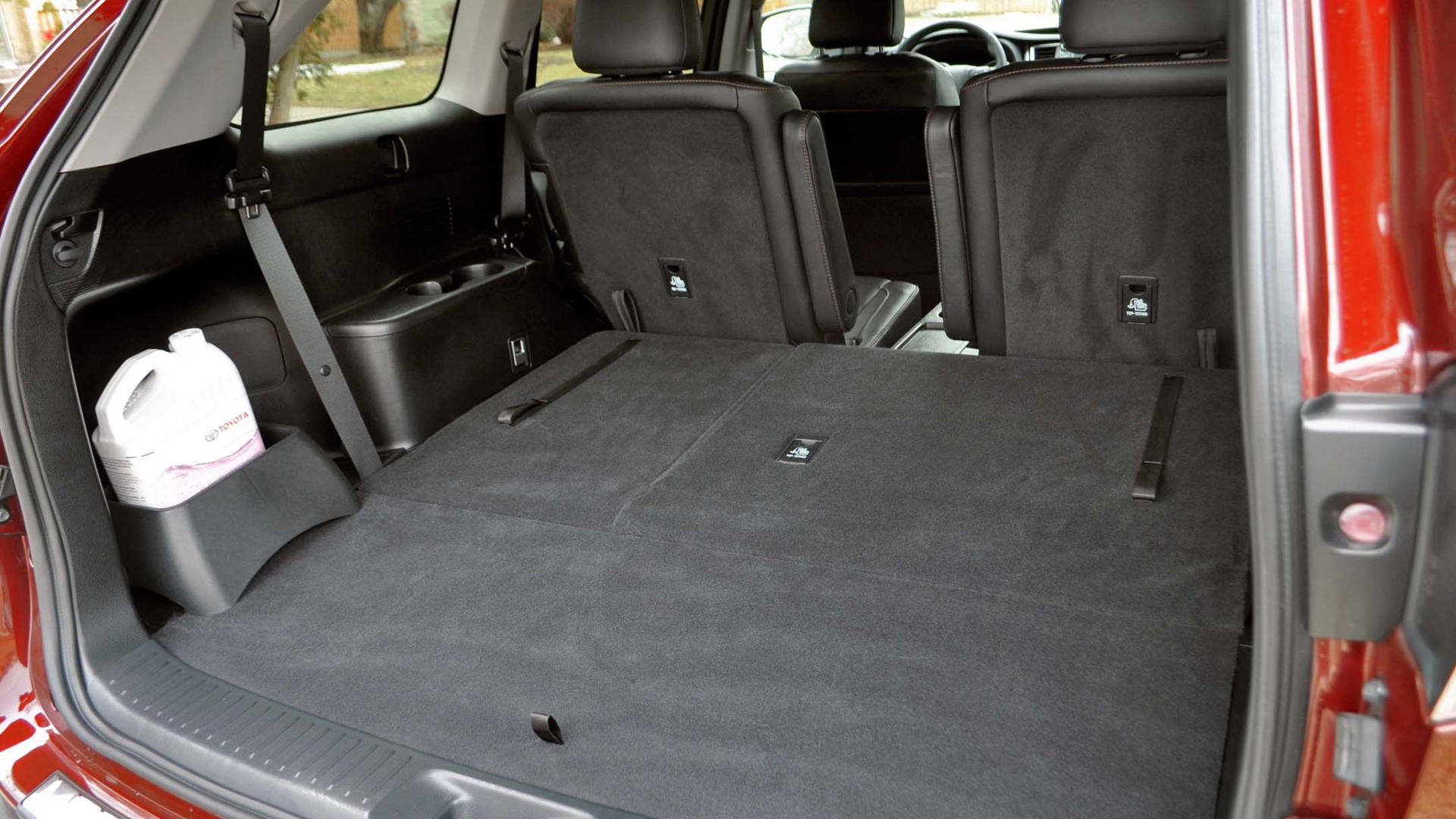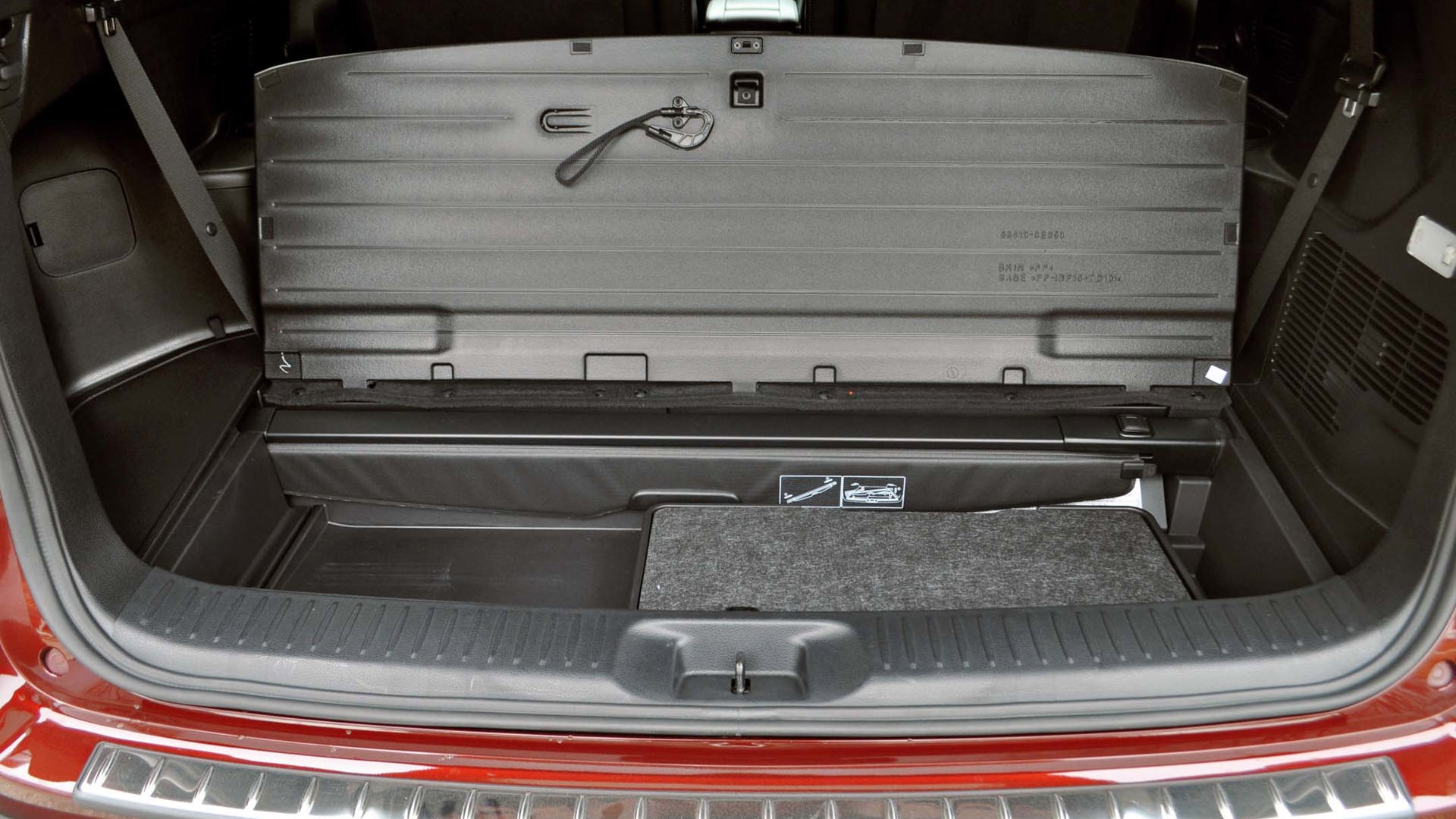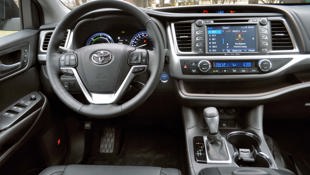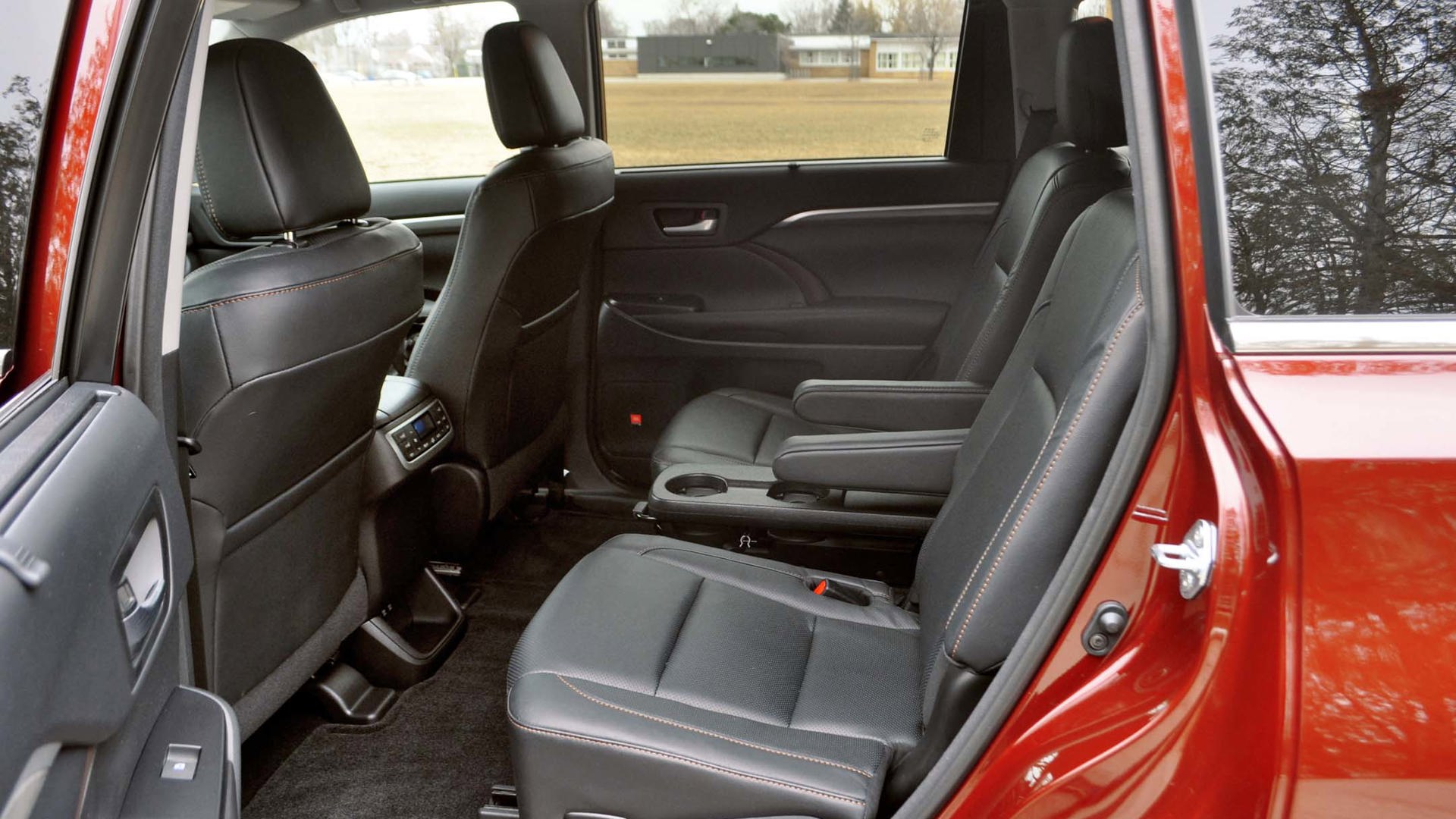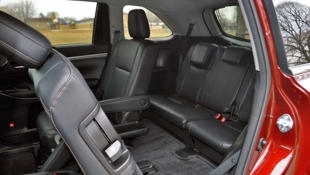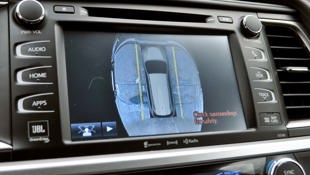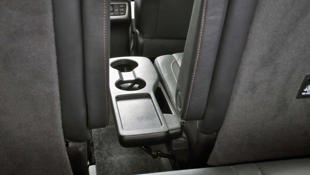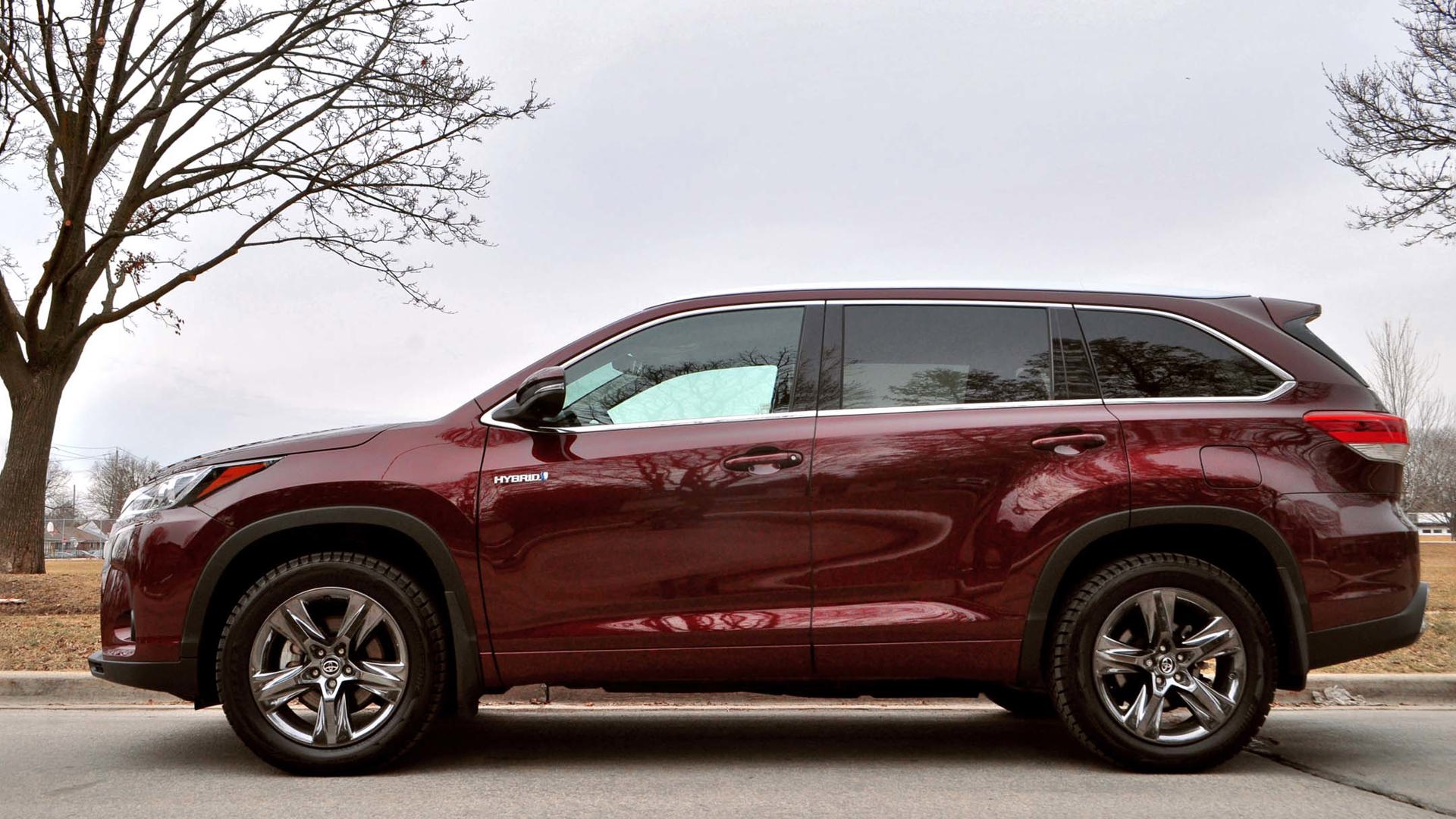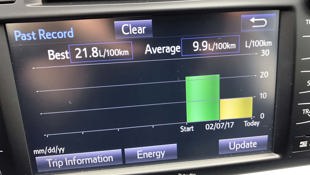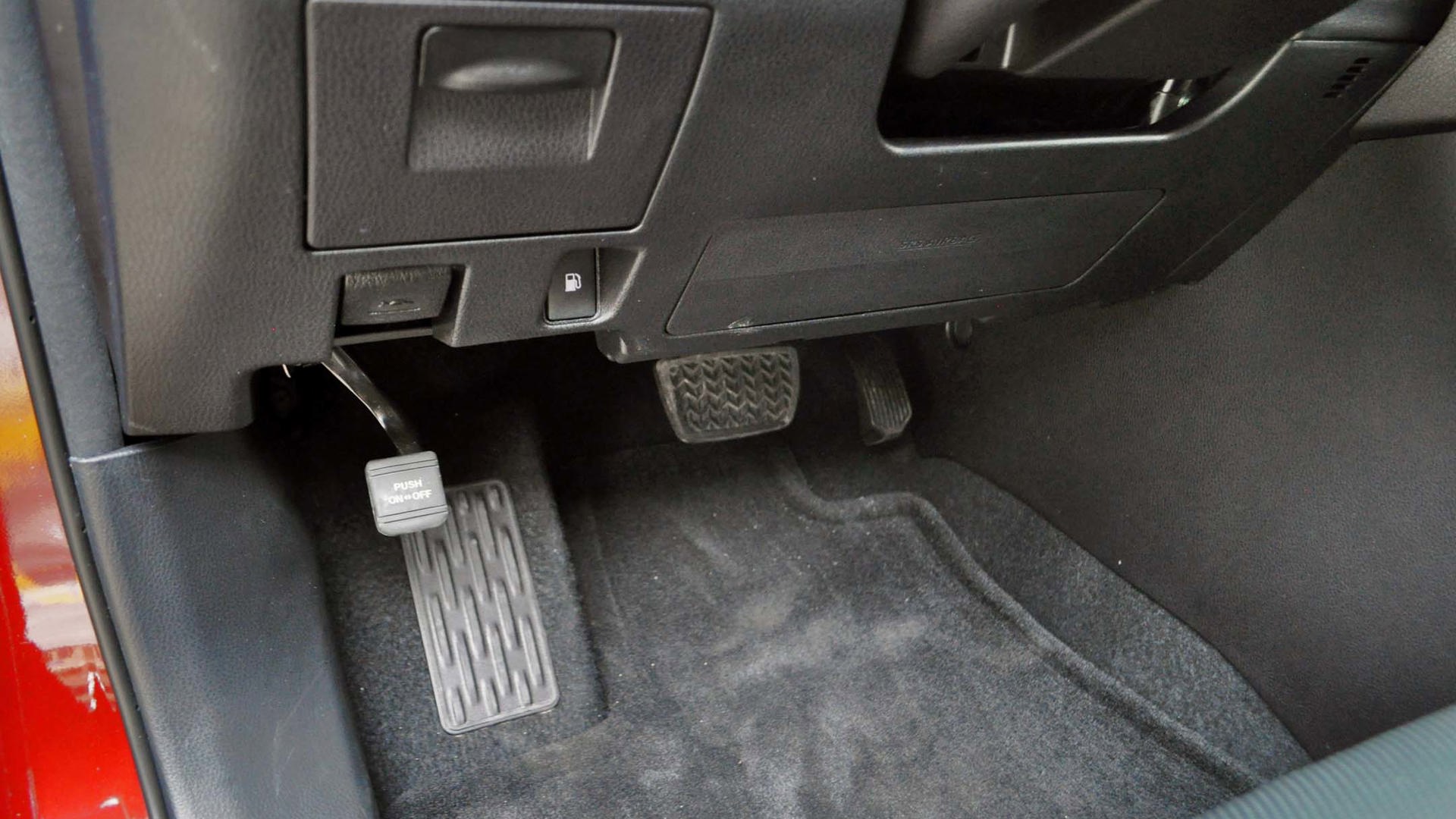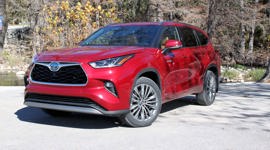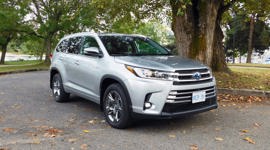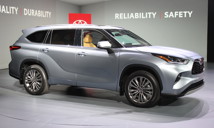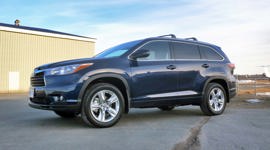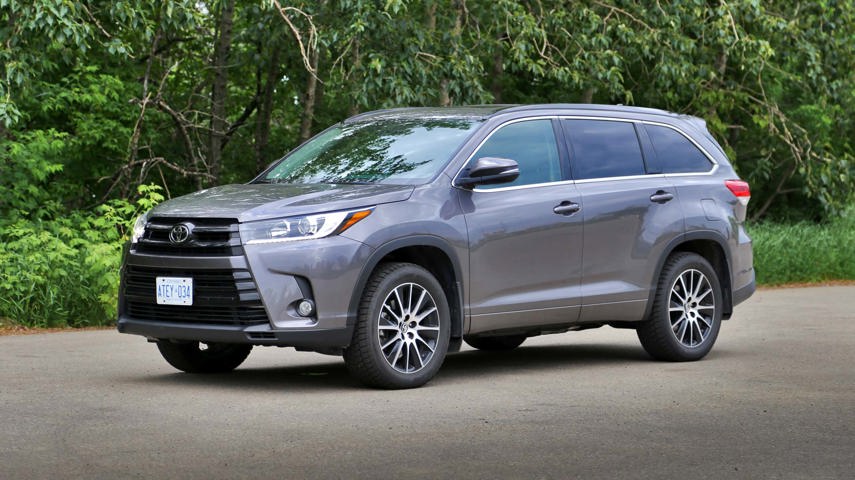 AutoTrader SCORE
AutoTrader SCORE
-
STYLING7/10
-
Safety8/10
-
PRACTICALITY9/10
-
USER-FRIENDLINESS8/10
-
FEATURES8/10
-
POWER8/10
-
COMFORT8/10
-
DRIVING FEEL7/10
-
FUEL ECONOMY8/10
-
VALUE8/10
Now that the revised 2017 Toyota Highlander doesn’t look as bland as vanilla ice cream with ice burn, which it did for many years, this practical three-row SUV seems relevant once again in the mainstream flurry to all-wheel-drive crossovers as family transportation.
A worthy combination of advanced powertrain technology, comfort and spaciousness
Throw in the fact that this is the Highlander Hybrid, one of the most fuel-efficient seven- or eight-seat SUVs on the market, and it seems a much more tempting recipe for families who want a practical SUV with relatively low operating costs – whether that’s at the pumps, in depreciation or in long-term dependability. These last couple are important but difficult factors to predict when testing new vehicles, but ones in which Toyotas in general and the Highlander in particular have historically done well.
Given the relatively minor engineering changes for 2017, it’s a good bet that the Toyota Highlander Hybrid will continue to excel in all three of these areas over the long term. And it’ll do so at a notably lower price than its upscale corporate cousin, the Canadian-built Lexus RX 450h, which starts at just over $70,000, compared to the Toyota’s starting price of $49,985.
That Lexus offers largely the same fuel-efficient (for an SUV) powertrain as the Highlander Hybrid, plus the Toyota comes standard with a third row that’s not available in the more aristocratic but less practical Lexus.
The as-tested $57,878 price on this all-singing, all-dancing Highlander Hybrid Limited may sound expensive – get ready for raised eyebrows and “Your Toyota cost what?!” comments if it comes up – but there’s a worthy combination of advanced powertrain technology, comfort and spaciousness that helps make a good case for value here.
Stacking up to the greenest three-row hauler, the Chrysler Pacifica Hybrid
The question that kept floating through my mind in my week with the Highlander Hybrid was whether it had the overall design appeal, technology and practicality of the all-new Chrysler Pacifica Hybrid plug-in minivan, a similarly priced three-row people-mover that right now is the gold standard when it comes to road-trip-ready family-friendliness in an enviro-conscious, fuel-efficient package.
Looks-wise, the Highlander makes a good case for itself, with boxier but traditionally outdoorsy SUV styling, plus more ground clearance and standard all-wheel drive in all Highlander Hybrids that will appeal to the safety-conscious and winter-wary. Gas-only Highlanders offer front wheel-drive base models starting at $35,500 for 2017, but the Pacifica is front-drive only, in all trims, at least so far.
Inside the cabin, there’s plenty of space in all directions, with pleasingly large and simple knobs controlling all major functions, plus a handy storage tray under the climate controls to hold your cell phone – complete with a cut-out to neatly route its cable for charging or playing music. No Apple CarPlay or Android Auto here though, reflecting the firm investment Toyota has in its own infotainment offering.
The steering wheel brings all the usual audio and phone functions to your fingertips, and a simple arrow system to scroll through less usual ones, while the wheel’s rim is (heavenly) heated on the top-line Limited. What look like huge buttons surrounding the centre touchscreen are actually touch-sensitive pressure pads, complete with raised bumps to allow you to feel for the Home, Audio and Apps functions closest to the driver, with more traditional buttons for simple climate functions.
It’s all very user-friendly and understated, with some artfulness added in the flowing, brown cell phone tray and silver interior accents. It’s a fine interior, and doesn’t look old-fashioned until you step into something more modern and with a bit more visual and material flair, areas where the Pacifica and other pricier SUVs such as the Infiniti QX60 and Volvo XC 90 excel.
Practicality unlimited, practically, for an SUV
It’s true that it’s difficult to beat the practicality of power-sliding side doors when you’re in a mall parking lot with children – that slowly opening maw just seems to pull kids in like a tractor beam, with no parental worries of distracted young ’uns trading paint with the car next to you. But this is a practical luxury that many former or potential minivan owners are clearly willing to sacrifice, as evidenced by waning minivan sales and growing SUV share.
So you can’t fault the Highlander Hybrid for its four normal SUV doors, if that’s what sales suggest folks want. Still, the fact that the Pacifica is the first minivan to also offer the handy foot-sweep option to automatically open either side door is a further practicality point in its favour, over everything else, so far.
But if folks in this market truly wanted to maximize the space and utility plus have that all-wheel-drive security, well, there’s a plenty competent all-wheel-drive Sienna minivan available as well, sitting next to the Highlander in Toyota showrooms.
It’s not like the Highlander lacks for family-friendly features. Though one can load up to eight people in a nicely equipped (outside the missing heated steering wheel) Highlander Hybrid XLE, the Limited model comes standard with two second-row captain’s chairs and features a cup holder tray between them that can easily be folded away to provide walk-through capability to the third row. Room back there is not plentiful for adults, or most teenagers, but the second-row captain’s chairs can be adjusted forward or back for extra flexibility.
Speaking of power doors, what is less acceptable at the Highlander Hybrid’s price is the lack of that same foot-sweep trigger for the power-operated rear tailgate. Walking up to the roomy rear cargo area with anything in both hands means an awkward hunt in your jeans/jacket/purse for the key fob, or a press of the often wet or dirty tailgate release under the blue-tinged rear Toyota badge.
If my four-year-old C-Max and an increasing number of much less expensive crossovers can offer the ability to just kick the air under the rear bumper to magically open the rear tailgate, so should the Highlander Hybrid. And all family-oriented SUVs, wagons and minivans, actually. It really is one of those “forehead slapper” features – you wonder why it didn’t arrive sooner – that spread across the auto business, sooner or later.
One rare feature the Highlander Hybrid still offers is a subtle black button on the outside of the rear tailgate that will release just the rear glass – handy if you have to move long Ikea boxes or have objects sticking out the rear.
Drives as quiet and comfortably as it rides
Most folks buying any three-row SUV are likely not prioritizing dynamic handling or performance, and neither does the Highlander Hybrid. Quiet, refined comfort is the main personality trait of this SUV, reflected in the 3.5-litre V6 engine that’s off at idle, red lights and at very low speeds, using battery power gathered not through plugging into the grid, but simply by braking as any driver normally would.
Though there is a noticeable switch to engine power once the limited nickel–metal hydride battery’s power is used up, there’s a technical cleverness in such a complicated system recouping power and therefore saving fuel relatively invisibly. Toyota has tweaked its Hybrid Synergy Drive system and accompanying V6 to bump its total output up to 306 combined horsepower, though it still strangely doesn’t list a torque figure for this powertrain, as most other automakers do on their hybrids.
Officially, this results in a seven-seat SUV that averages a terrific 8.3 L/100 km in combined city and highway driving, according to Canadian government figures. This one showed a lifetime average of 9.9 L/100 km overall, which is likely more realistic in the wintertime. For comparison’s sake, the Pacifica Hybrid averages 7.3 L/100 km overall in government figures, showing the advantages of its newer and much higher capacity lithium-ion battery.
That Pacifica Hybrid promises (and delivers) up to 50 km or so of all-electric, no-gas driving, which may be enough to cover many people’s commutes. Even if not, its gas-only fuel efficiency combined with the $14,000 government clean vehicle rebate it offers in Ontario ($8,000 in Quebec and $5,000 in BC) should pose an enticing value proposition to potential shoppers.
Overall then, the 2017 Toyota Highlander Hybrid is an impressively quiet, efficient and practical family hauler. It’s certainly pushing the upper limits of Toyota pricing territory, as well as starting to show its age in some aspects, but is worthy of consideration if you’re looking for that rare combination of fuel efficiency and maximum family room.
| Engine Displacement | 3.5L + electric motor |
|---|---|
| Engine Cylinders | V6 |
| Peak Horsepower | 306 hp |
| Peak Torque | N/A |
| Fuel Economy | 8.1/8.5/8.3 L/100 km city/hwy/cmb |
| Cargo Space | 385 L, 1,189 L rear seats down |
| Model Tested | 2017 Toyota Highlander Hybrid Limited |
| Base Price | $55,990 |
| A/C Tax | $100 |
| Destination Fee | $1,760 |
| Price as Tested | $57,850 |
|
Optional Equipment
None
|
|

